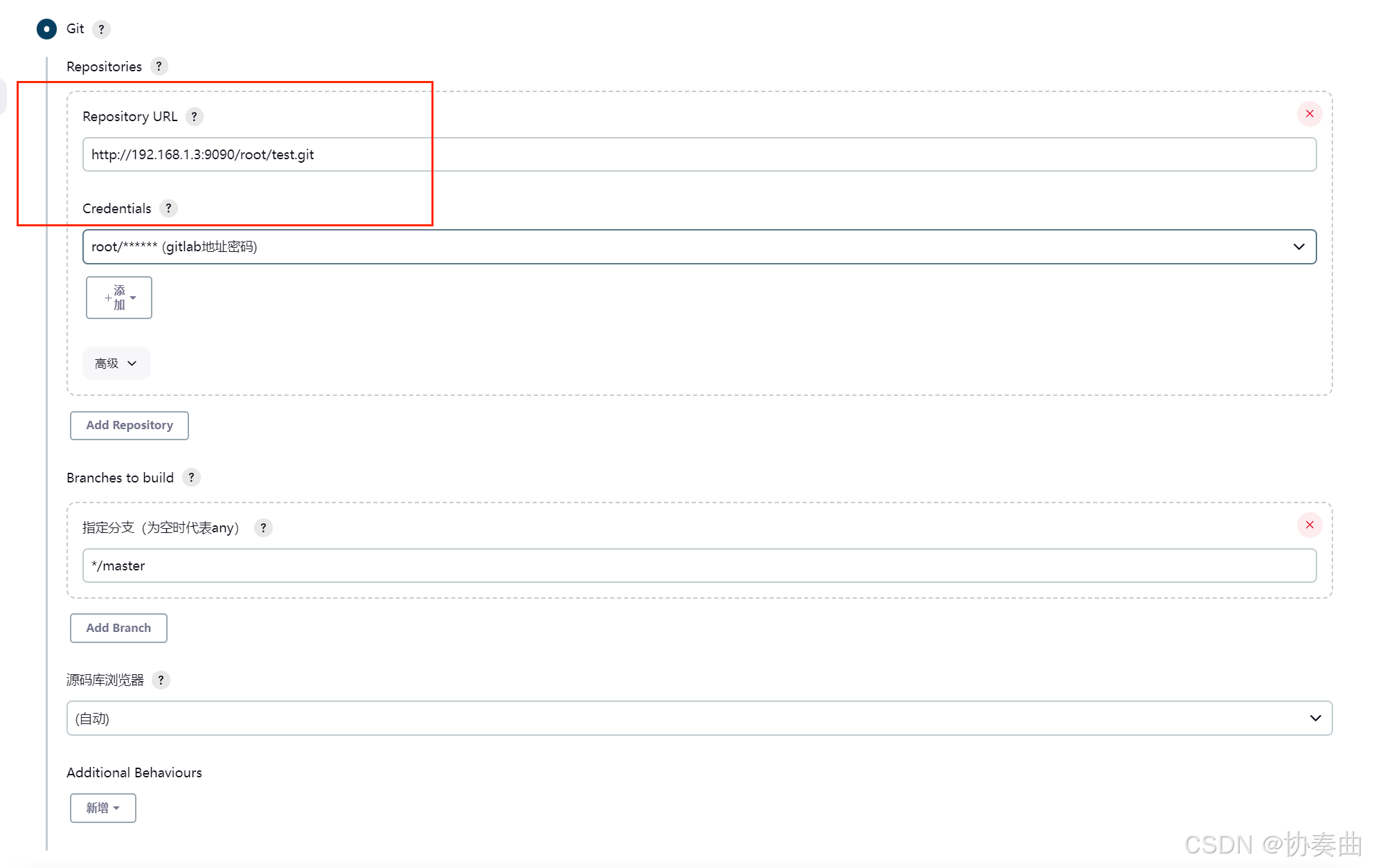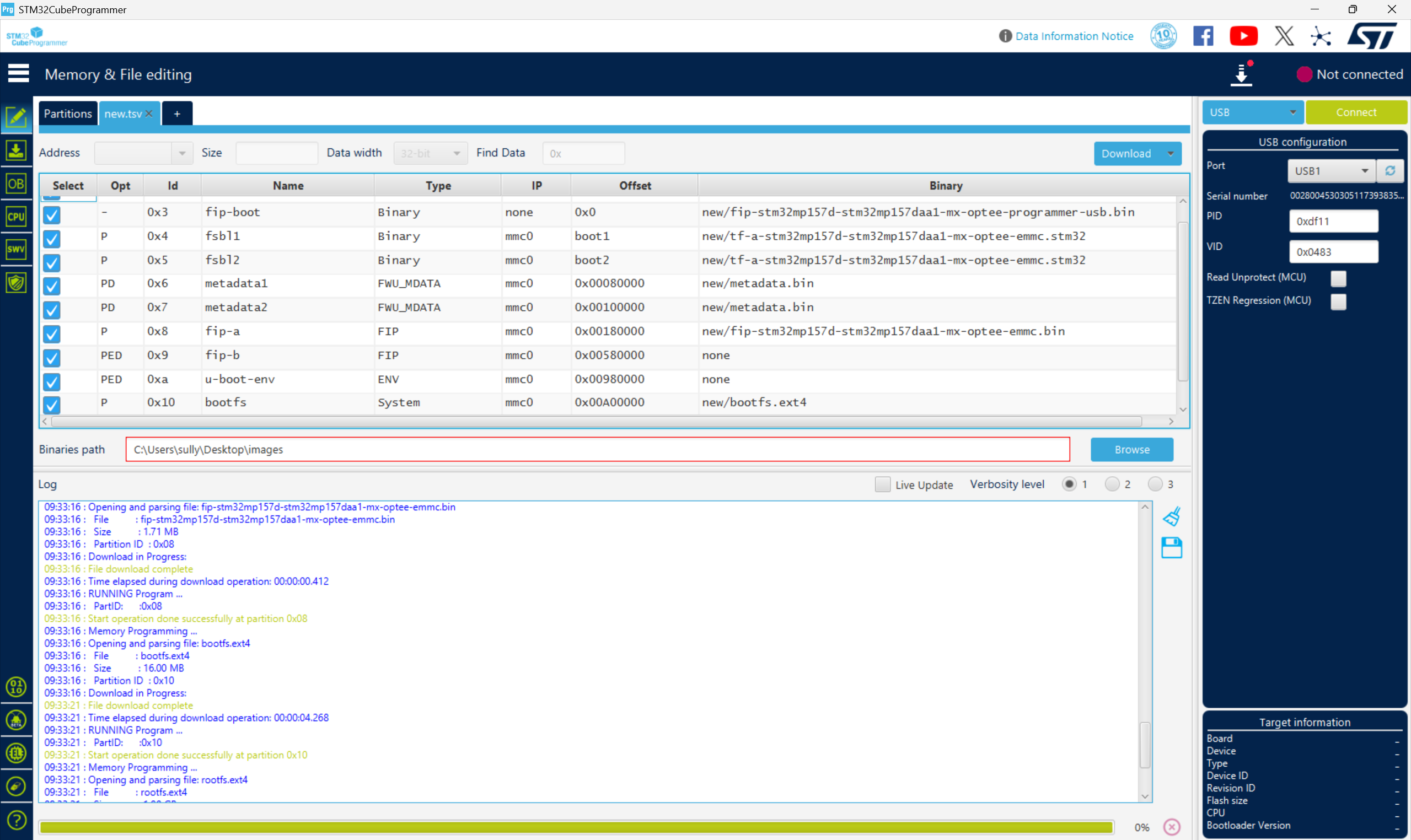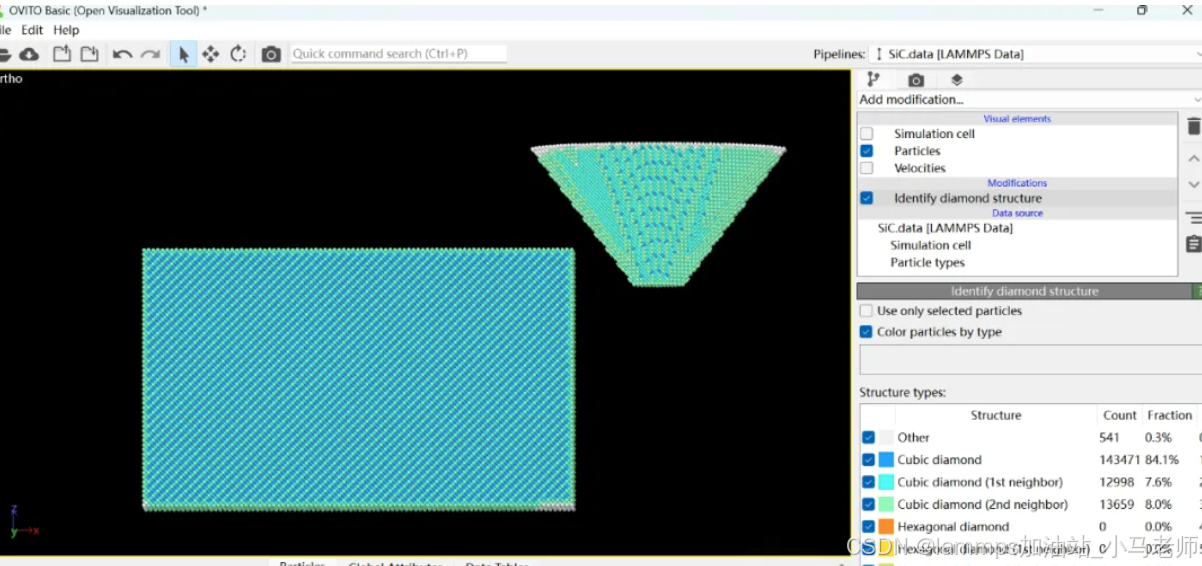jenkins自动化构建docker镜像并上传至harbor仓库
1、插件下载

首先进入jenkins之后需要现在“Maven”、“GitLab”、“Jdk”、“SSH”、“Git”的相关插件,这里不再赘述,需要什么插件直接安装即可

搜索对应插件后选择直接安装即可
2、系统全局配置
2.1 Maven配置

配置maven安装的相应的setting文件

不知道具体目录的可以通过“mvn -v”之后的Maven home查看
vim /usr.local/apache-maven-3.9.6/conf/setting.xml
修改mirrors下的源地址,因为后面在jenkins中进行jar包打包的时候需要通过maven下载对应的依赖,使用默认maven仓库地址可能会导致失败
<mirror><id>mirrorId</id><mirrorOf>repositoryId</mirrorOf><name>Human Readable Name for this Mirror.</name><url>http://my.repository.com/repo/path</url></mirror>--><!-- 阿里云仓库 --><mirror><id>alimaven</id><mirrorOf>central</mirrorOf><name>aliyun maven</name><url>http://maven.aliyun.com/nexus/content/repositories/central/</url></mirror><!-- 中央仓库1 --><mirror><id>repo1</id><mirrorOf>central</mirrorOf><name>Human Readable Name for this Mirror.</name><url>http://repo1.maven.org/maven2/</url></mirror><!-- 中央仓库2 --><mirror><id>repo2</id><mirrorOf>central</mirrorOf><name>Human Readable Name for this Mirror.</name><url>http://repo2.maven.org/maven2/</url></mirror>修改maven打包后jar包的java编译编译工具版本,原来setting.xml中的默认版本为jdk1.4,修改为17
<profile><id>jdk-17</id><activation><jdk>17</jdk></activation><repositories><repository><id>jdk17</id><name>Repository for JDK 17 builds</name><url>http://www.myhost.com/maven/jdk17</url><layout>default</layout><snapshotPolicy>always</snapshotPolicy></repository></repositories></profile>我的完整setting.xml如下,可参照
<?xml version="1.0" encoding="UTF-8"?><!--
Licensed to the Apache Software Foundation (ASF) under one
or more contributor license agreements. See the NOTICE file
distributed with this work for additional information
regarding copyright ownership. The ASF licenses this file
to you under the Apache License, Version 2.0 (the
"License"); you may not use this file except in compliance
with the License. You may obtain a copy of the License athttp://www.apache.org/licenses/LICENSE-2.0Unless required by applicable law or agreed to in writing,
software distributed under the License is distributed on an
"AS IS" BASIS, WITHOUT WARRANTIES OR CONDITIONS OF ANY
KIND, either express or implied. See the License for the
specific language governing permissions and limitations
under the License.
--><!--| This is the configuration file for Maven. It can be specified at two levels:|| 1. User Level. This settings.xml file provides configuration for a single user,| and is normally provided in ${user.home}/.m2/settings.xml.|| NOTE: This location can be overridden with the CLI option:|| -s /path/to/user/settings.xml|| 2. Global Level. This settings.xml file provides configuration for all Maven| users on a machine (assuming they're all using the same Maven| installation). It's normally provided in| ${maven.conf}/settings.xml.|| NOTE: This location can be overridden with the CLI option:|| -gs /path/to/global/settings.xml|| The sections in this sample file are intended to give you a running start at| getting the most out of your Maven installation. Where appropriate, the default| values (values used when the setting is not specified) are provided.||-->
<settings xmlns="http://maven.apache.org/SETTINGS/1.2.0"xmlns:xsi="http://www.w3.org/2001/XMLSchema-instance"xsi:schemaLocation="http://maven.apache.org/SETTINGS/1.2.0 https://maven.apache.org/xsd/settings-1.2.0.xsd"><!-- localRepository| The path to the local repository maven will use to store artifacts.|| Default: ${user.home}/.m2/repository<localRepository>/path/to/local/repo</localRepository>--><!-- interactiveMode| This will determine whether maven prompts you when it needs input. If set to false,| maven will use a sensible default value, perhaps based on some other setting, for| the parameter in question.|| Default: true<interactiveMode>true</interactiveMode>--><!-- offline| Determines whether maven should attempt to connect to the network when executing a build.| This will have an effect on artifact downloads, artifact deployment, and others.|| Default: false<offline>false</offline>--><!-- pluginGroups| This is a list of additional group identifiers that will be searched when resolving plugins by their prefix, i.e.| when invoking a command line like "mvn prefix:goal". Maven will automatically add the group identifiers| "org.apache.maven.plugins" and "org.codehaus.mojo" if these are not already contained in the list.|--><pluginGroups><!-- pluginGroup| Specifies a further group identifier to use for plugin lookup.<pluginGroup>com.your.plugins</pluginGroup>--></pluginGroups><!-- TODO Since when can proxies be selected as depicted? --><!-- proxies| This is a list of proxies which can be used on this machine to connect to the network.| Unless otherwise specified (by system property or command-line switch), the first proxy| specification in this list marked as active will be used.|--><proxies><!-- proxy| Specification for one proxy, to be used in connecting to the network.|<proxy><id>optional</id><active>true</active><protocol>http</protocol><username>proxyuser</username><password>proxypass</password><host>proxy.host.net</host><port>80</port><nonProxyHosts>local.net|some.host.com</nonProxyHosts></proxy>--></proxies><!-- servers| This is a list of authentication profiles, keyed by the server-id used within the system.| Authentication profiles can be used whenever maven must make a connection to a remote server.|--><servers><!-- server| Specifies the authentication information to use when connecting to a particular server, identified by| a unique name within the system (referred to by the 'id' attribute below).|| NOTE: You should either specify username/password OR privateKey/passphrase, since these pairings are| used together.|<server><id>deploymentRepo</id><username>repouser</username><password>repopwd</password></server>--><!-- Another sample, using keys to authenticate.<server><id>siteServer</id><privateKey>/path/to/private/key</privateKey><passphrase>optional; leave empty if not used.</passphrase></server>--></servers><!-- mirrors| This is a list of mirrors to be used in downloading artifacts from remote repositories.|| It works like this: a POM may declare a repository to use in resolving certain artifacts.| However, this repository may have problems with heavy traffic at times, so people have mirrored| it to several places.|| That repository definition will have a unique id, so we can create a mirror reference for that| repository, to be used as an alternate download site. The mirror site will be the preferred| server for that repository.|--><mirrors><!-- mirror| Specifies a repository mirror site to use instead of a given repository. The repository that| this mirror serves has an ID that matches the mirrorOf element of this mirror. IDs are used| for inheritance and direct lookup purposes, and must be unique across the set of mirrors.|<mirror><id>mirrorId</id><mirrorOf>repositoryId</mirrorOf><name>Human Readable Name for this Mirror.</name><url>http://my.repository.com/repo/path</url></mirror>--><!-- 阿里云仓库 --><mirror><id>alimaven</id><mirrorOf>central</mirrorOf><name>aliyun maven</name><url>http://maven.aliyun.com/nexus/content/repositories/central/</url></mirror><!-- 中央仓库1 --><mirror><id>repo1</id><mirrorOf>central</mirrorOf><name>Human Readable Name for this Mirror.</name><url>http://repo1.maven.org/maven2/</url></mirror><!-- 中央仓库2 --><mirror><id>repo2</id><mirrorOf>central</mirrorOf><name>Human Readable Name for this Mirror.</name><url>http://repo2.maven.org/maven2/</url></mirror></mirrors><!-- profiles| This is a list of profiles which can be activated in a variety of ways, and which can modify| the build process. Profiles provided in the settings.xml are intended to provide local machine-| specific paths and repository locations which allow the build to work in the local environment.|| For example, if you have an integration testing plugin - like cactus - that needs to know where| your Tomcat instance is installed, you can provide a variable here such that the variable is| dereferenced during the build process to configure the cactus plugin.|| As noted above, profiles can be activated in a variety of ways. One way - the activeProfiles| section of this document (settings.xml) - will be discussed later. Another way essentially| relies on the detection of a property, either matching a particular value for the property,| or merely testing its existence. Profiles can also be activated by JDK version prefix, where a| value of '1.4' might activate a profile when the build is executed on a JDK version of '1.4.2_07'.| Finally, the list of active profiles can be specified directly from the command line.|| NOTE: For profiles defined in the settings.xml, you are restricted to specifying only artifact| repositories, plugin repositories, and free-form properties to be used as configuration| variables for plugins in the POM.||--><profiles><!-- profile| Specifies a set of introductions to the build process, to be activated using one or more of the| mechanisms described above. For inheritance purposes, and to activate profiles via <activatedProfiles/>| or the command line, profiles have to have an ID that is unique.|| An encouraged best practice for profile identification is to use a consistent naming convention| for profiles, such as 'env-dev', 'env-test', 'env-production', 'user-jdcasey', 'user-brett', etc.| This will make it more intuitive to understand what the set of introduced profiles is attempting| to accomplish, particularly when you only have a list of profile id's for debug.|| This profile example uses the JDK version to trigger activation, and provides a JDK-specific repo.<profile><id>jdk-17</id><activation><jdk>17</jdk></activation><repositories><repository><id>jdk17</id><name>Repository for JDK 17 builds</name><url>http://www.myhost.com/maven/jdk17</url><layout>default</layout><snapshotPolicy>always</snapshotPolicy></repository></repositories></profile>--><!--| Here is another profile, activated by the property 'target-env' with a value of 'dev', which| provides a specific path to the Tomcat instance. To use this, your plugin configuration might| hypothetically look like:|| ...| <plugin>| <groupId>org.myco.myplugins</groupId>| <artifactId>myplugin</artifactId>|| <configuration>| <tomcatLocation>${tomcatPath}</tomcatLocation>| </configuration>| </plugin>| ...|| NOTE: If you just wanted to inject this configuration whenever someone set 'target-env' to| anything, you could just leave off the <value/> inside the activation-property.|<profile><id>env-dev</id><activation><property><name>target-env</name><value>dev</value></property></activation><properties><tomcatPath>/path/to/tomcat/instance</tomcatPath></properties></profile>--></profiles><!-- activeProfiles| List of profiles that are active for all builds.|<activeProfiles><activeProfile>alwaysActiveProfile</activeProfile><activeProfile>anotherAlwaysActiveProfile</activeProfile></activeProfiles>-->
</settings>2.2 git下载
在jenkins中自动构建项目的时候,我们的第一步是从gitlab仓库中拉取我们的代码,所以必不可少需要进行git的安装

如果自动安装失败,需要修改jenkins的镜像文件
#进入配置文件
vim /etc/docker/daemon.json
# 在文件在最后,增添如下源地址
"registry-mirrors": ["https://docker.m.daocloud.io","https://dockerhub.icu","https://registry.aliyuncs.com","https://docker.nju.edu.cn"]
# 保存后退出
# 重启加载dokcer配置
systemctl reload daemon.json
# 重启docker容器使之生效
systemctl restart docker
如果还是安装失败,可自行百度“centos7系统安装git的教程”,安装过程较为简单,这里不再赘述
3、maven任务构建
我这里在gitlab中创建了一个非常基础的maven项目进行测试,所以构建了maven项目

如果你的界面中没有这个maven任务构建的选项,则说明你没有安装对应的maven插件,可在安装完对应maven插件后再继续进行。
构建任务的命名按自己的意向命名即可

构建完成任务后进入配置界面

3.1 重要配置描述
git配置

URL需要到安装的虚拟机中的gitlab项目中进行复制

第二步需要需要添加gitlab凭证,就是你登录部署gitlab这台虚拟机的账户和密码

在配置完全局凭证之后,就可以在任务中的凭证栏选择你刚才配置的凭证了

触发器默认选第一项即可

build栏目如下
build post的配置
在我们进行完成jar包的构建之后,需要将构建好的jar包文件打包成docker镜像,并上传到harbor仓库之中,选择第二个选项的意思是在完成jar的打包之后才进行下一步,然后输入需要执行的shell脚本自行自动化部署

# 进入jenkins打包完成的地址,下面有构建完成的jar包,你们打包完成后如果没有进行目录的修改,前缀应该和我的相同
cd /var/lib/jenkins/workspace/test-bjw/
# 进行docker镜像的构建,注意命名不可以用大写,否则会报错,还有就是这条命令最后有一个‘.’不要忽略,它表示在该目录下执行
docker build -t jenkins_bjw-1.0-snapshot .
# 连接远程harbor仓库
docker login -u admin -p Harbor12345 192.168.1.5:80
# 对docker镜像进行tag标签处理
docker tag jenkins_bjw-1.0-snapshot 192.168.1.5:80/jenkins/jenkins-bjw:v0
# 上传到harbor仓库之中
docker push 192.168.1.5:80/jenkins/jenkins-bjw:v0
构建不成功的可看下一节“可能遇到的问题”
4、 可能遇到的问题
(1)maven打包jar包失败
maven默认情况下,下载依赖的仓库地址非常慢,如果jenkins在进行jar包构建的时候依赖下载失败,请重新检查是否更换了mirror地址,具体操作在本文开始环节
(2)docker构建镜像的时候找不到Dockerfile文件
docker构建项目的时候需要安装Dockerfile的配置进行,但是有时候我们的目录下并没有该Dockerfile文件,所以需要进行Dockerfile文件的创建
1、从idea中打开对应项目,并复制Dockerfile下的内容

2、创建Dockerfile文件
vim Dockerfile
插入刚才复制的内容,如果你的项目中没有,可以按照我的文件进行修改
(3)docker中jenkins用户组不存在或者权限不足
我们知道jenkins在进行任务构建的时候需要进行dokcer命令的执行,若权限不足会导致失败
# 在docker中添加jenkins用户组
sudo usermod -aG docker jenkins
# 若还是失败,可以重启Jenkins和docker使该命令生效
(4)虚拟机中配置insecure-registries
不配置该条目将无法访问harbor容器
# 进入配置文件
vim /etc/docker/daemon.json
# 增添对应配置,对应上面的截图进行修改
"insecure-registries": ["harbor.domain.io"]
# 重启docker服务使之生效
service docker restart效果如下,为harbor的虚拟机ip地址以及对应的服务端口号

(5)上传harbor容器的时候可能会因为命令输入错误而失败,对应的操作详见我的另一篇博客“虚拟机(CentOS7)虚拟机安装harbor及简单使用”
5、 成功部署
jenkins控制台输出如下

harbor容器中docker镜像如下

相关文章:

jenkins自动化构建docker镜像并上传至harbor仓库
1、插件下载 首先进入jenkins之后需要现在“Maven”、“GitLab”、“Jdk”、“SSH”、“Git”的相关插件,这里不再赘述,需要什么插件直接安装即可 搜索对应插件后选择直接安装即可 2、系统全局配置 2.1 Maven配置 配置maven安装的相应的setting文件 …...

Java高级Day23-HashMap
74.HashMap Map接口常用实现类:HashMap、Hashtable和Properties HashMap是Map接口使用频率最高的实现类 HashMap是以key-value对的方式来存储数据 key不能重复,但是值可以重复,允许使用null健和null值 如果添加相同的key,会覆…...

【学术会议征稿】第四届电气工程与计算机技术国际学术会议(ICEECT2024)
第四届电气工程与计算机技术国际学术会议(ICEECT2024) 2024 4th International Conference on Electrical Engineering and Computer Technology 第四届电气工程与计算机技术国际学术会议(ICEECT2024)将于9月27日-29日在哈尔滨举…...

Spring boot tomcat使用自定义线程池监控线程数量告警
Spring boot tocmat 使用自定义线程池 线程池 接近最大线程数量 警戒值告警 修改tomcat线程池中线程名字 配置文件上代码 server:port: 9898servlet:context-path: /testtomcat:connection-timeout: 5000max-connections: 5accept-count: 5 tomcat_thread_max_number_warn:…...

K8S子节点加入主节点访问MaterAPI报错:Unauthorized 401
问题场景: 本地测试由于之前安装过K8S今天重启无法使用了,于是重新安装了一下,子节点加入主节点报错: I0808 23:13:04.299356 19180 round_trippers.go:466] curl -v -XGET -H "Accept: application/json, */*" -H …...

C++ Poco服务端框架中JSON的使用
提示:文章写完后,目录可以自动生成,如何生成可参考右边的帮助文档 文章目录 前言一、JSON是什么?二、使用步骤总结 前言 上面一篇文章教你学会了Poco开发服务端应用,这个教程教会你使用JSON。一般传JSON的时候都是POS…...

leetcode787. K 站中转内最便宜的航班——优先队列优化的Dijkstra算法+剪枝
题目 leetcode787. K 站中转内最便宜的航班 题目分析 给定一个城市图,每个城市通过航班与其他城市相连。每个航班都有一个起点、终点和价格。你需要找到从起点城市 src 到终点城市 dst 的最便宜路径,但这条路径最多只能经过 k 个中转站。你需要返回这…...

赛盈分销亮相AI科技大会暨亚马逊新增长大会,与企业共话跨境品牌发展新机遇!
八月开端,由知无不言与xmars和钱老师课堂联合主办的2024年AI科技大会暨亚马逊新增长大会在深圳宝安顺利开展,为期2天的跨境峰会吸引了上千位优秀的卖家朋友前来感受一场盛夏大狂欢。在本次跨境峰会里,邀请了多位不同领域的先锋人物࿰…...

Nacos-配置中心
1.为什么要使用配置中心? 2.常用的配置中心组件? 3.如何使用? 在配置中心创建配置文件 启动一个单列的nacos服务 点击发布 在微服务中使用 添加依赖 <!--nacso配置中心的依赖--><dependency><groupId>com.alibaba.cloud&l…...

ava中的文件操作、IO流、递归和字符集
目录 File类的使用 创建File对象 创建和删除文件 遍历文件夹 IO流 字节流 读取文件 字符流 读取文本文件 写入文本文件 递归 计算阶乘 文件搜索 字符集 编码与解码 File类的使用 在Java中,File类用于表示文件和目录的路径。它提供了一些方法来创建、删…...

生成式人工智能安全评估体系构建
文章目录 前言一、人工智能安全治理的现状1.1 国际安全治理现状1.2 国内安全治理现状二、构建人工智能安全评估体系1.1 需要对生成式人工智能技术的安全性、可靠性、可控性、公平性等维度进行全面的考量。1.2 应对生成式人工智能全维度风险。1.3 在体系化应对框架中,应明确法律…...

NRBO-XGBoost分类 基于牛顿-拉夫逊优化算法[24年最新算法]-XGBoost多特征分类预测+交叉验证
NRBO-XGBoost分类 基于牛顿-拉夫逊优化算法[24年最新算法]-XGBoost多特征分类预测交叉验证 多输入单输出) matlab代码 程序已调试好,无需更改代码替换数据直接使用!!!数据格式为excel格式!需要定制可私&a…...

synchronized实现原理及优化
一、概述 线程安全在并发编程中是重要关注点,造成线程安全问题的主要诱因有两个:一是存在共享数据(也称临界资源),二是存在多个线程共同操作共享数据。synchronized关键字能够保证在同一时刻只有一个线程可以执行某个…...

NLP 之词的表示与语言模型
表示的基本原理: 机器无法理解文字,却能进行复杂的数学运算——神经网络只要够深、够复杂,就能拟合足够复杂的数学模式。把文字嵌入(embed)到一个向量空间中去。 词表示(Word Representation)…...
- 假设检验)
每天一个数据分析题(四百七十一)- 假设检验
下列对假设检验的描述合理的是? A. 备择假设是研究者想收集证据予以支持的假设 B. 原假设是研究者想收集证据予以推翻的假设 C. 原假设是研究者想收集证据予以支持的假设 D. 备择假设是研究者想收集证据予以推翻的假设 数据分析认证考试介绍:点击进入 题目来…...

《系统架构设计师教程(第2版)》第13章-层次式架构设计理论与实践-04-数据访问层设计
文章目录 1. 五种数据访问模式1.1 在线访问1.2 DAO1.3 DTO1.4 离线数据模式1.5 对象/关系映射 (O/R Mapping) 2. 工厂方法模式在数据访问层应用3 ORM、Hibernate与CMP2.0设计思想3.1 ORM3.2 Hibernate1)概述2) Hibernate的架构(2023年的考题&…...

【视觉SLAM】 十四讲ch7习题
简介 本文主要内容是《视觉SLAM十四讲》(第二版)第7章的习题解答,并介绍了在解答习题中的一下思考和总结的经验。本文代码部分参考了:HW-of-SLAMBOOK2 1、除了本书介绍的ORB特征点,你还能找到哪些特征点?…...
)
K-近邻算法(二)
三、 kd 树 问题导⼊: 实现k 近邻算法时, 主要考虑的问题是如何对训练数据进⾏快速 k 近邻搜索。这在特征空间的维数⼤及训练数据容量⼤时尤其必要。 k 近邻法最简单的实现是线性扫描(穷举搜索),即要计算输⼊实例与…...

WPF学习(2)-UniformGrid控件(均分布局)+StackPanel控件(栈式布局)
UniformGrid控件(均分布局) UniformGrid和Grid有些相似,只不过UniformGrid的每个单元格面积都是相等的,不管是横向的单元格,或是纵向的单元格,它们会平分整个UniformGrid。 UniformGrid控件提供了3个属性…...

ANTSDR E310
ANTSDR E310是一款由微相科技有限公司(MicroPhase)推出的软件无线电(SDR)平台,专为现场部署设计。以下是对ANTSDR E310的详细介绍: 一、主要特点 独立运行的软件无线电:ANTSDR E310具备独立运…...

Unity3D中Gfx.WaitForPresent优化方案
前言 在Unity中,Gfx.WaitForPresent占用CPU过高通常表示主线程在等待GPU完成渲染(即CPU被阻塞),这表明存在GPU瓶颈或垂直同步/帧率设置问题。以下是系统的优化方案: 对惹,这里有一个游戏开发交流小组&…...

智能在线客服平台:数字化时代企业连接用户的 AI 中枢
随着互联网技术的飞速发展,消费者期望能够随时随地与企业进行交流。在线客服平台作为连接企业与客户的重要桥梁,不仅优化了客户体验,还提升了企业的服务效率和市场竞争力。本文将探讨在线客服平台的重要性、技术进展、实际应用,并…...

Qt Http Server模块功能及架构
Qt Http Server 是 Qt 6.0 中引入的一个新模块,它提供了一个轻量级的 HTTP 服务器实现,主要用于构建基于 HTTP 的应用程序和服务。 功能介绍: 主要功能 HTTP服务器功能: 支持 HTTP/1.1 协议 简单的请求/响应处理模型 支持 GET…...

从零开始打造 OpenSTLinux 6.6 Yocto 系统(基于STM32CubeMX)(九)
设备树移植 和uboot设备树修改的内容同步到kernel将设备树stm32mp157d-stm32mp157daa1-mx.dts复制到内核源码目录下 源码修改及编译 修改arch/arm/boot/dts/st/Makefile,新增设备树编译 stm32mp157f-ev1-m4-examples.dtb \stm32mp157d-stm32mp157daa1-mx.dtb修改…...

【python异步多线程】异步多线程爬虫代码示例
claude生成的python多线程、异步代码示例,模拟20个网页的爬取,每个网页假设要0.5-2秒完成。 代码 Python多线程爬虫教程 核心概念 多线程:允许程序同时执行多个任务,提高IO密集型任务(如网络请求)的效率…...

Android15默认授权浮窗权限
我们经常有那种需求,客户需要定制的apk集成在ROM中,并且默认授予其【显示在其他应用的上层】权限,也就是我们常说的浮窗权限,那么我们就可以通过以下方法在wms、ams等系统服务的systemReady()方法中调用即可实现预置应用默认授权浮…...
-HIve数据分析)
大数据学习(132)-HIve数据分析
🍋🍋大数据学习🍋🍋 🔥系列专栏: 👑哲学语录: 用力所能及,改变世界。 💖如果觉得博主的文章还不错的话,请点赞👍收藏⭐️留言Ǵ…...

Python Ovito统计金刚石结构数量
大家好,我是小马老师。 本文介绍python ovito方法统计金刚石结构的方法。 Ovito Identify diamond structure命令可以识别和统计金刚石结构,但是无法直接输出结构的变化情况。 本文使用python调用ovito包的方法,可以持续统计各步的金刚石结构,具体代码如下: from ovito…...

【Linux】Linux 系统默认的目录及作用说明
博主介绍:✌全网粉丝23W,CSDN博客专家、Java领域优质创作者,掘金/华为云/阿里云/InfoQ等平台优质作者、专注于Java技术领域✌ 技术范围:SpringBoot、SpringCloud、Vue、SSM、HTML、Nodejs、Python、MySQL、PostgreSQL、大数据、物…...

C++ 设计模式 《小明的奶茶加料风波》
👨🎓 模式名称:装饰器模式(Decorator Pattern) 👦 小明最近上线了校园奶茶配送功能,业务火爆,大家都在加料: 有的同学要加波霸 🟤,有的要加椰果…...
